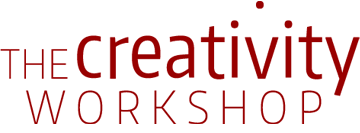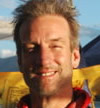The Gift of the Amateur
Natural Awakenings Magazine
We’re all born creative. Curious and hungry to explore the world around and within us, our search for the beauty of being never stops. Deep inside we yearn to enlarge our daily joie de vivre, even make our life a work of art.
Immersing ourselves in the soul-satisfying zest of creative expression answers this indwelling call. We feel transformed, fully authentic, utterly alive.
But how often do we fully feed our artistic soul, a need as essential to a balanced life as exercise and meditation? We need not be a natural-born artist. For creativity naturally colors all we do as we journey and listen to our dreams. It’s how we give meaning to life. And it has little relation to the outside world’s objective standards and aesthetic criteria.
This month Natural Awakenings explores how experienced workshop leaders can guide us in releasing our own inborn joy of creation. Shelley Berc and Alejandro Fogel operate worldwide from Creativity Workshop in New York.
Writer Shelley Berc and multimedia artist Alejandro Fogel established their company, Creativity Workshop, in 1993. Together they lead workshops that develop imagination through tools of writing, drawing, storytelling and personal memoir. Exercises help participants delve into their own life stories, childhood memories and intuition midst inspiring environments in New York, Barcelona, Florence, Prague, Provence, Dublin, Bruges and Crete.
Berc’s plays have won multiple national awards. She’s published two novels, and writes “Postcards from Shelley” a column about her world travels. From 1985 until 2000 Berc served as Professor of the International Writing Program and the Iowa Playwrights Workshop at the University of Iowa.
Fogel’s award-winning artworks grace galleries, museums and public and private collections in 10 countries on four continents. Media range from words and paint to video, digital and performance art. A major focus explores the cultural heritage and legacies of Pre-Columbian art. He’s helped develop a native folk artists archive with the Argentine Commission of Visual Arts. And he’s been artist-in-residence at the Institute of Current World Affairs and the Rockefeller Foundation Study and Conference Center.
How do you feel before, during and after a personal creative session?
SB: I meditate before I write. It helps me relax, so that I can listen and perceive deeply. While writing I feel like an antenna for the world-not just for people, but nature too-so my feelings fluctuate. The best is when I feel nothing but being inside the words. If a musical instrument could feel, perhaps that’s what it would feel like when playing music. It can be exhausting listening to inner characters invent themselves. My everyday self doesn’t quite know where it fits in after I’ve finished a day’s writing.
How can participants emotionally prepare for a creative workshop with you?
SB: We counsel workshop participants to relax and be patient with themselves. We all need to release the ego that gets in the way of new and innovative ideas and makes us fearful of doing things we might not be good at right away. A project’s innate gestation period might be longer than we want. But as author Ranier Maria Rilke says, “You can’t tell a seed how long it should take to sprout.’ Come to class with the spirit of a beginner’s mind. Over and over we start at ground zero, for every moment of imagination is like no other. Children understand this. Adults sometimes say, “I did this as a kid, why would I do it again now? I already know it!’ But true seeing is always new. It calls for simplicity, not-knowing, not pre-conceiving. Every session is geared to this sense of seeing and doing for the first time.
AF: Creativity workshops are about process not product. We must suspend judgment and just keep writing and drawing. We’re like runners racing against our critical selves. If we can out-run that, we’ll see amazing possibilities. The only mistake we can make is to give up on our imagination. That’s why author Samuel Beckett advises that we “Fail, then fail better.” We must keep trying, exploring, believing we can go deeper.
SB: People become less fearful and more playful. They gain courage in their creative ventures. Writers discover they can draw. Visual folks fall in love with writing. We strip the barriers between creative disciplines and try to race back and forth between language and imagery so creativity becomes a fluid, joyful whole, a reliable river of inspired ideas.
AF: Joan Miro has painted the same stars all over his paintings ever since he was a teenager. I asked a Miro museum curator why. She said that every morning when Miro faced his canvas he’d panic and freeze. He couldn’t start working. One morning, Miro faced away from the blank space, held his brush behind his back and doodled some strokes. When he turned and saw that a star had emerged, he realized that the canvas was no longer empty or intimidating. In our workshops we start with doodling geometric shapes like spirals, circles and infinity loops. The shapes get us going.
AF: Many report that this workshop has changed their lives. But it’s they who have changed. Our workshop acts as a gentle catalyst that nudges and nurtures toward such change. Some go on to switch jobs, practice art, start or finish a book, travel, work with children or volunteer as peace activists. Collaborative discussions in class feed everyone’s inspiration.
What inner indicators signal that we are ready to take this step?
SB: So many of us once wrote, painted, performed or took photos, then gave it up for one reason or another. Plus we have this absurd cultural notion that if we can’t make money at it then we aren’t good enough to do it. One day we wake up and say, “I used to love doing that. Why don’t I do it any more?”
Forgetting that we have something is different from never having had it, for it can be reawakened and valued. As teachers, Alejandro and I help students realize that expressing one’s self creativity is as natural as breathing.
Living in itself is a creative act. Artful living is a way of always seeing things with curious new eyes, exploring, questioning, courageously stepping out to be who we are. A creativity workshop like ours provides a frame in which to play, discover and refine our voices, images and dreams.





